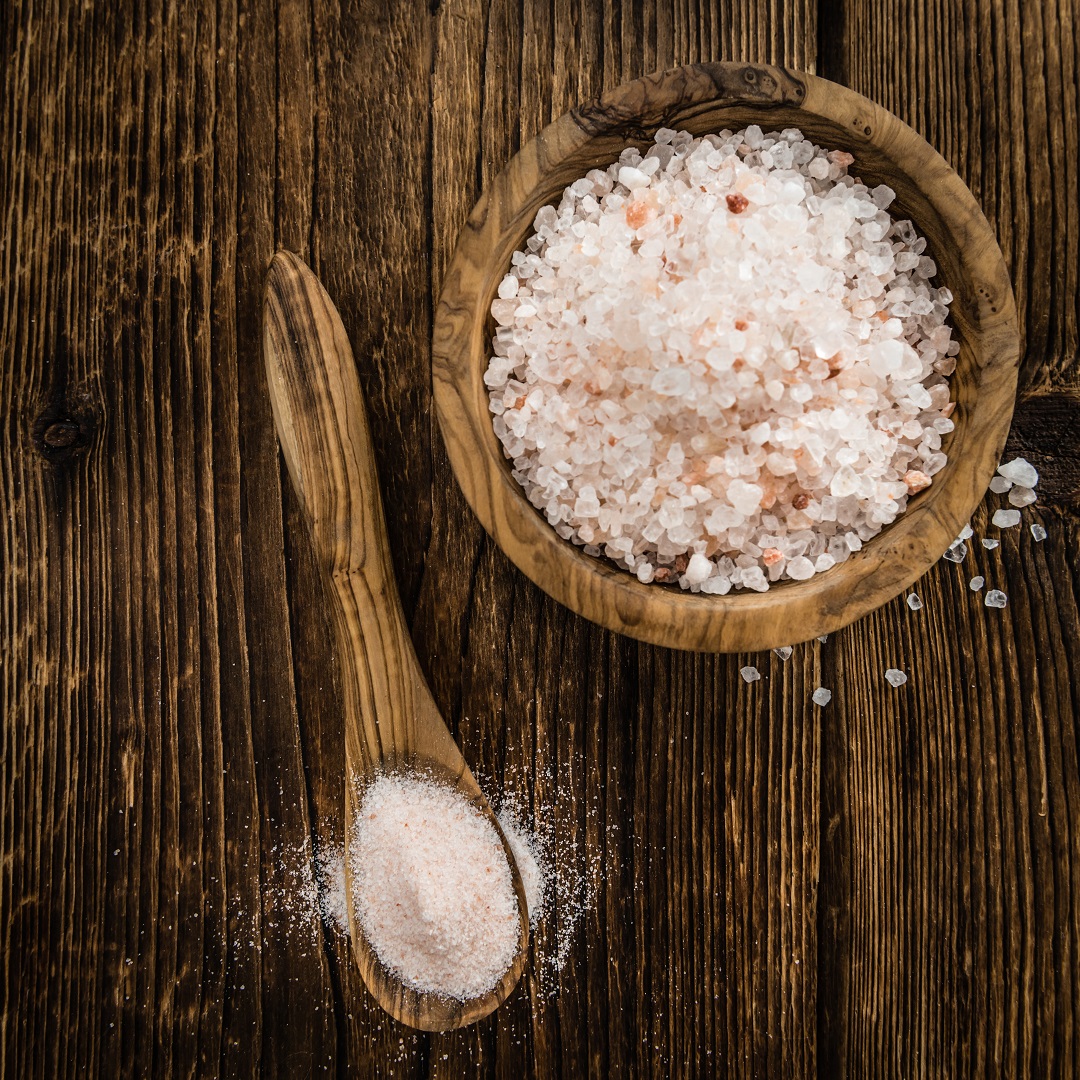by Stephen Luther, M.D.
Share

Good Nutrition is Possible with a Grain of Salt
Salt: it’s a broad-ranging mineral that has played a pivotal role throughout human history, from preserving food and enhancing flavor to impacting brain and cellular functions. While salt’s popularity is often scrutinized for its manufactured health risks, it’s essential to recognize that the elements of salt, which are 60% sodium and 40% chloride, are necessary for good health.
To demystify salt, we will look beyond the humble shaker in our kitchen to discover this crystalline treasure’s place in our world by exploring its fascinating history, various types and uses, and the crucial roles sodium and chloride play in our health.
The Preserved History of Salt
Salt’s usefulness and consumption have been prominent in society since ancient times. In fact, the Bible references to salt 47 times. Its value is highlighted as an early form of taxation and currency, leading to the term salary derived from the Latin word Sal, for salt.
Early civilizations recognized salt’s significance for embellishing taste and as a pre-refrigeration food preservation because it draws out moisture, slows fermentation, and kills bacteria. Its long-standing journey was traced back to its use as a preservative in the Egyptian mummification process, a salary for Roman soldiers, and economic control by Chinese emperors.
The first known salt works dates to around 6000 BC in what is now Romania, which was only a short time before salt production became a global industry. Initially, consumption amounts depended on cultural and geographical factors, leading to entire trade routes being established to transport this precious commodity. Historically, even as modern societies evolved, salt has remained an integral part of our diets.
Types of Salt and the Healthiest Shake
Salt can be sprinkled in four categories:
- Table salt is a heavily processed sodium chloride, refined and stripped of minerals (some modern processes re-add iodine and add an aluminum compound to prevent clumping).
- Sea salt is a natural salt that contains traces of iodine and beneficial minerals.
- Himalayan pink rock salt is a rich natural salt containing iodine and all 84 trace elements of essential minerals.
- Celtic grey sea salt is unwashed, unrefined, and unground naturally moist crystals from the grey sand and clay in Brittany, France. Its traditional Celtic harvest methods help retain the traces of necessary minerals, including iodine.
The intact form of vital additional elements determines the quality of a salt. Therefore, an unprocessed, unbleached (pink, beige, or grey) organic salt is the best to shake on our food because it provides essential minerals. The Celtic grey sea salt and Himalayan pink rock salt are among the healthiest selections, with iodine naturally present.
Salt’s Role is Center Stage in Our Health
We need salt with its two components, sodium and chloride, for our bodies to function properly in the following areas:
- Adrenal function: The adrenal glands are most known for producing adrenaline, but they also form healthy hormones that help maintain blood pressure and salt and sugar levels in our blood and tissue. Adrenal fatigue may occur without adequate salt.
- Blood pressure regulation: Sodium helps regulate blood pressure by controlling blood volume. It works with potassium, another electrolyte, to maintain a healthy balance.
- Bone health:27% of the body’s salt is in the bones. Without enough salt, osteoporosis can occur.
- Digestion and nutrient absorption: In digestion, the chloride creates hydrochloric acid for meat, and the sodium activates enzymes for carbohydrates. Sodium is involved in the absorption of critical nutrients in the small intestine.
- Electrolyte balance: Sodium is an electrolyte that helps maintain proper fluid in our cells, nerves, and muscles.
- Hydration: Sodium helps our body retain water, thus preventing dehydration. Higher sodium intake may be needed to compensate for salt lost through sweating during exercise and in warmer weather.
- Muscle function: Sodium is essential for muscle contraction and relaxation. Because the heart is a muscle, it also is necessary for regular heartbeats.
- Nerve and brain function: Sodium transmits nerve impulses, enabling focused brain thoughts and commands such as muscle movements.
- Nutrient transport: Sodium aids in transporting nutrients, such as glucose and amino acids, into cells.
- PH regulation: Salt assists in maintaining the body’s acid-base balance. A saltwater rinse is beneficial for soothing sore throats and maintaining a healthy microbiome in the mouth.
- Saline solutions: Saltwater rinses are used for wound cleaning and breaking up phlegm in nasal passages.
Salt’s Versatile Use in Everyday Life
Beyond preservation, flavor booster, and good health, salt is also helpful for:
- Cleaning agents: Salt’s abrasive nature makes it a valuable tool for cleaning and deodorizing household items.
- Water Softener: Hard water leaves spots and a mineral build-up on appliances and dishes. A water softener system runs water through salt crystals to remove resin and give water a softer feel on clothes and skin.
- De-icer: Salt crystals can be spread on roads and sidewalks to melt ice and improve safety during winter months.
- Health and beauty: Salt is a fundamental ingredient in various health and beauty products, from bath salts to skincare scrubs. Epson salt is well known for its muscle relaxation during soaking.
Q & A on Common Salt Allegations
With so much nutrition information at our fingertips, it is challenging to decipher what is correct. You may have pondered some of the misconceptions addressed below.
Have the benefits of salt to the human body changed in the last few decades?
No. The only change was the campaign against salt by the government. While there is a connection between salt and the regulation of blood pressure, salt promotes good vascular health. A meta-analysis of 6,250 participants proved no link between salt and high blood pressure and salt-related heart disease.
Will a low-salt diet improve my health?
No. Many intelligent Americans are re-examining the theory that too much salt relates to poor health. Diet modifications focusing solely on lower salt intake typically experience the same issues. To reduce salt, many achieve results by consuming less processed foods, but processed food is the true culprit in poor health, not salt.
Does too much salt cause water retention?
No. Our bodies recognize their needs and even crave salt on hot, sweaty days. We cannot produce it, so we must consume it with mineral traces of potassium, calcium, and magnesium for electrolytes. Health issues such as muscle cramps, nausea, fainting, or irregular heartbeats may occur without sufficient electrolytes.
How much salt is healthy?
We need at least one and one-half teaspoons of salt per day to satisfy the body’s requirements for sodium and chloride – more when working in the hot sun or under stress.
What should I be eating?
Symbios recommends unprocessed, natural foods with plenty of protein, fat, and green veggies sprinkled with salt. The expert guidance of Symbios Nutrition at 843.738.4800 can offer meal plans and simple strategies to let you indulge in the right food choices for your tastes and needs!
Preserve Your Health
The health advantages embedded in this versatile crystal can dissolve into your daily life. Shake off the myths and make informed choices regarding your salt intake. Please call Symbios at 843.738.4800 to discuss the right amount of salt in your diet and monitor your bloodwork with Symbios Lab to ensure your optimal health is well preserved.





